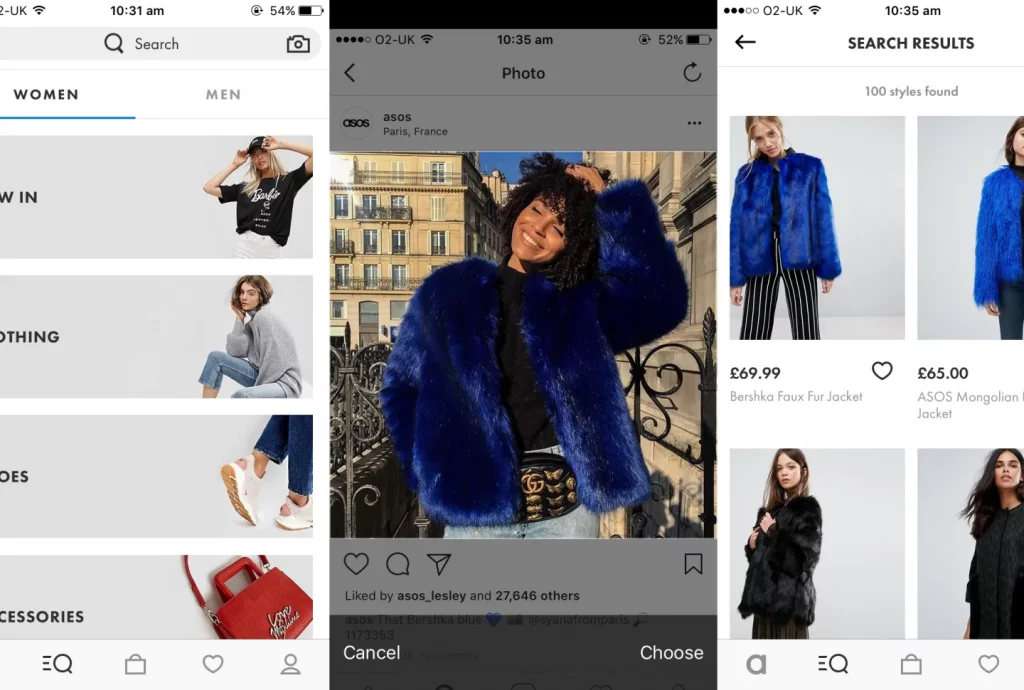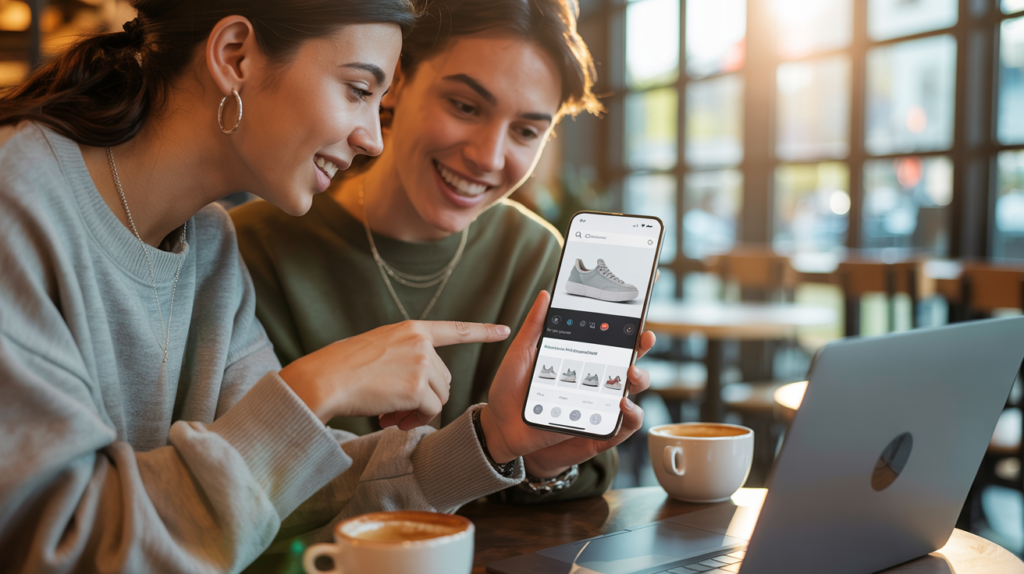For years, online shopping has relied on words. Type a description, scroll through options, refine, repeat. But for digital-native consumers who live in a world of Instagram Reels and TikTok videos, describing what they want in words feels outdated. The next era of discovery is visual.
What is Visual Search?
Visual search is a technology that lets users find products by snapping or uploading a photo instead of typing keywords. It uses computer vision and AI to analyze the image, identify objects within it, and return visually similar items. In retail, this means shoppers can point their camera at something they like, such as a jacket, a chair, or a lamp, and instantly find where to buy it.
It’s one of the most exciting frontiers in e-commerce, bridging the gap between inspirat…
For years, online shopping has relied on words. Type a description, scroll through options, refine, repeat. But for digital-native consumers who live in a world of Instagram Reels and TikTok videos, describing what they want in words feels outdated. The next era of discovery is visual.
What is Visual Search?
Visual search is a technology that lets users find products by snapping or uploading a photo instead of typing keywords. It uses computer vision and AI to analyze the image, identify objects within it, and return visually similar items. In retail, this means shoppers can point their camera at something they like, such as a jacket, a chair, or a lamp, and instantly find where to buy it.
It’s one of the most exciting frontiers in e-commerce, bridging the gap between inspiration, convenience and purchase. While adoption is still early, new data and shifting consumer habits suggest that 2026 will mark visual search’s transition from emerging trend to essential retail capability.
Visual Search Statistics
Visual search is gaining traction, but it hasn’t gone fully mainstream yet. Here are some key numbers that show where the technology stands today:
- [Only about 10% of U.S. adults use visual search regularly](Emarketer: Amazon, Google enhance visual search features), but 42% say they’re interested in trying it
- [36% of consumers have tried visual search at least once](http://Best Colorful Socks: Top 20 Fashion Visual Search Usage Statistics 2025), according to data compiled by Best Colorful Socks
- The leaders in adoption are Gen Z and younger millennials (ages 16–34), with about 22% using visual search to discover or buy items — compared to 17% of 35–54 year-olds and only 5% among those 55+.
The State of Visual Search: High Interest, Early Adoption
These numbers show a huge gap between curiosity and daily use — a sign of strong untapped demand once visual search becomes more accessible, accurate, and embedded into everyday shopping experiences.
The generational divide is particularly revealing. Younger consumers have grown up with camera-based interaction — scanning QR codes, using AR filters, and discovering products through TikTok or Pinterest. For them, using the camera to shop isn’t a futuristic novelty; it’s the next logical step.
That means visual search isn’t just a new feature, but an emerging behavior that reflects how a new generation shops, discovers, and expects technology to work. As this group’s purchasing power grows, so will the expectation that retailers support image-based discovery as naturally as they do text or voice search.
Who’s Leading the Charge
Retailers aren’t waiting for consumers to catch up. They’re already experimenting with camera-powered commerce. Visual search has moved from novelty to necessity among innovation-driven brands. Data backs this up.
[Google Lens handles about 20 billion visual searches per month](https://imagga.com/blog/Amazon, Google enhance visual search features), with 4 billion related to shopping, while Amazon has seen a 70% year-over-year increase in visual searches worldwide.
TikTok is testing product search by image on TikTok Shop, and Poshmark has rolled out similar functionality.
Traditional retailers are also seeing measurable results: ASOS’s Style Match feature increased engagement and conversions, and [Zalando reported an 18% rise in customer engagement after adding visual search.](http://Cross Border Magazine: Main E-Commerce Technologies during 2024 + Case Study Examples)
 Image: Asos
Image: Asos
IKEA, Sephora, and H&M have followed suit, showing that visual discovery is now part of how modern retail competes.
The message is clear: visual search is no longer experimental. It’s becoming a key differentiator in digital shopping experiences — and the brands that adopt it early are already reaping measurable benefits.
The Consumer Lens: Why Visual Search Just Makes Sense
Younger shoppers don’t think in keywords — they think in visuals. They see an outfit on Instagram or a lamp in a friend’s apartment and want to “find it instantly.”
According to [Lyxel & Flamingo,](http://Lyxel & Flamingo: Visual Search and E-Commerce: Are You Prepared for the Next Big Revolution?) more than 60% of Gen Z and Millennials prefer visual over text search when it’s available, largely because it’s faster and more accurate for complex or hard-to-describe items. And 43% of online shoppers say they get frustrated when text-based search fails to match what they’re looking for.
The trust gap between visuals and words is another driver. [85% of shoppers trust product images over descriptions](http://Best Colorful Socks: Top 20 Fashion Visual Search Usage Statistics 2025), especially for categories like apparel or furniture.
It’s no coincidence that 86% of visual search users rely on it for fashion.

The ROI: From Inspiration to Conversion
Visual search doesn’t just look futuristic, it delivers measurable results. Retailers adopting it are seeing higher engagement, bigger baskets, and faster paths to purchase.
Shopify data shows that visual discovery tools can [lift sales by an average of 15%, while other studies report conversion rate increases of up to 12% after integrating visual search.](http://ASD Market Week: The Top 8 Retail Business Trends of 2025)
The reason is simple: customers using visual search often have stronger intent. They’re not browsing — they’re hunting for a specific look or product. By turning inspiration into instant access, visual search bridges the gap between desire and checkout.
Barriers Still Holding Retailers Back
For all the excitement, many retailers still hesitate to take the leap. The challenge isn’t lack of interest, but complexity.
The main barriers include technical investment, data privacy, and integration complexity. Developing or licensing a robust visual search engine requires ongoing AI training and catalog updates, while compliance with GDPR adds another layer of responsibility.
Then there’s user education. Retailers often report that shoppers overlook the “camera” icon unless prompted. Older consumers are less likely to try new search modes. These factors explain why, despite strong consumer appetite, visual search is still a feature offered by the few, not the many.
But with maturing APIs and pre-trained AI solutions — like Imagga’s Visual Search API — these barriers are quickly eroding.
The Inflection Point: 2026 and Beyond
Visual search is approaching a turning point. The next 12–24 months will determine which retailers treat it as a must-have and which fall behind.
Forecasts suggest that 30% of major e-commerce brands will integrate visual search by 2025, [with adoption accelerating through 2026](http://Best Colorful Socks: Top 20 Fashion Visual Search Usage Statistics 2025).
The global market for visual search technology is expected to grow from $40 billion in 2024 to [more than $150 billion by 2032](http://Data Bridge Market Research: Global Visual Search Market Size, Share, and Trends Analysis Report – Industry Overview and Forecast to 2032), at a CAGR of 17–18%.
This growth will be driven by advances in computer vision and the blending of modalities — image + text + voice — that make product discovery effortless. As one retail analyst put it, “Visual search won’t replace text — it will complement it, making every query smarter and faster.”
In short: visual search is not the future of retail. It’s the next phase of it.
How Imagga Makes Visual Search Accessible
Until recently, implementing visual search meant major engineering investment. Imagga changes that.
With theImagga Visual Search API, retailers can enable camera-based product discovery without building models from scratch.
- Fast and accurate: Trained on billions of visual data points for high match precision.
- Privacy-safe: Designed for secure, compliant image processing.
- Scalable: Works for enterprise and mid-size brands alike.
- Customizable: Retailers can train models for their own product catalog or visual style.
As visual search shifts from niche to necessity, Imagga helps retailers bridge the gap — turning emerging behavior into business growth.
The Future of Search Is Visual
Visual search is no longer just a feature, but a fundamental change in how people find what they want. Younger shoppers already expect to shop through images, not words. The technology is ready, the use cases are proven, and the competitive stakes are rising.By 2026, visual search will move from the edges of e-commerce to its center. Retailers who prepare now will meet a generation that doesn’t search — they see.
FAQ: Visual Search in Retail
1. What is visual search?
Visual search is an AI-powered technology that allows users to find products by uploading or snapping a photo instead of typing keywords. The system analyzes the image, identifies objects or patterns, and returns visually similar results. In retail, it helps shoppers go from inspiration to purchase in a single step.
2. How does visual search work?
Visual search uses computer vision and deep learning to interpret the contents of an image — colors, shapes, textures, and objects. It then matches these visual features against a product catalog to find similar or identical items. Some systems, like Imagga’s Visual Search API, allow retailers to train the AI on their own datasets for greater accuracy.
3. Why is visual search important for e-commerce?
Visual search makes product discovery faster and more intuitive, especially when users don’t know what keywords to use. It helps retailers capture high-intent shoppers who already know what they want visually.
4. What are the biggest challenges for retailers adopting visual search?
The main barriers are technical complexity, cost, and data privacy. Building accurate image-matching models requires significant AI expertise and infrastructure. Retailers also need to handle user-uploaded images securely and comply with privacy regulations such as GDPR. Partnering with established providers like Imagga helps overcome these challenges quickly.
5. Who is using visual search the most?
Visual search is most popular among younger, digitally native shoppers who are already accustomed to discovering products through images and social media. They expect the same seamless, camera-first experience from retail sites that they get on platforms like Instagram or TikTok. As these consumers gain more buying power, their habits are shaping visual search into a must-have capability for retailers.
6. What is the future of visual search in retail?
Visual search is steadily becoming a core part of how shoppers explore and interact with brands. As technology improves and integrates with tools like augmented reality and voice search, using a camera to find products will feel as natural as typing a query today. Retailers that adopt visual search early will be better positioned to meet changing consumer expectations and create more intuitive, visually driven customer journeys.
References
1 Emarketer: Amazon, Google enhance visual search features
2 Best Colorful Socks: Top 20 Fashion Visual Search Usage Statistics 2025
3 Emarketer: Amazon, Google enhance visual search features
4 Cross Border Magazine: Main E-Commerce Technologies during 2024 + Case Study Examples5 Lyxel & Flamingo: Visual Search and E-Commerce: Are You Prepared for the Next Big Revolution?
6 Best Colorful Socks: Top 20 Fashion Visual Search Usage Statistics 20257 ASD Market Week: The Top 8 Retail Business Trends of 2025
8 Best Colorful Socks: Top 20 Fashion Visual Search Usage Statistics 2025